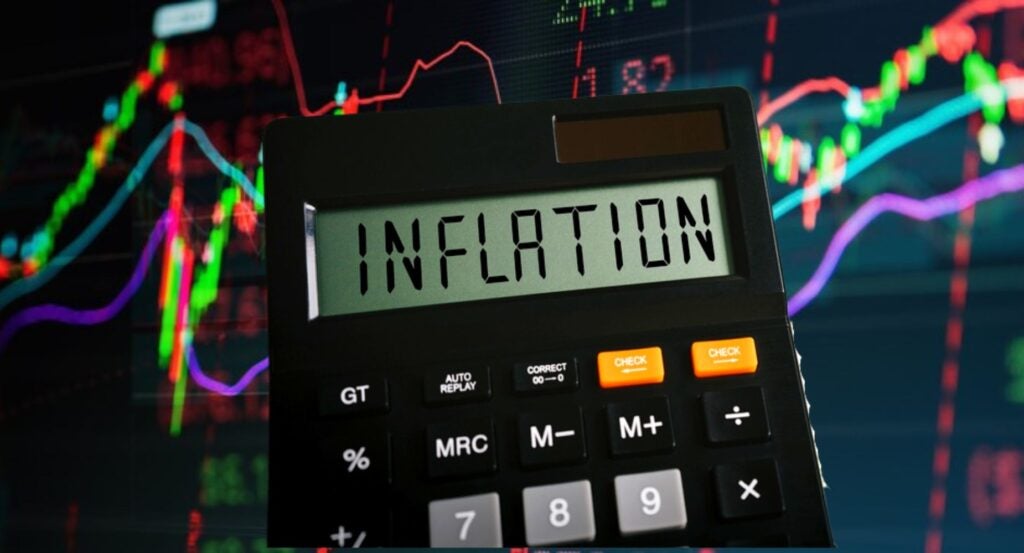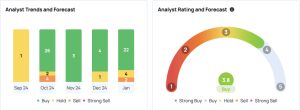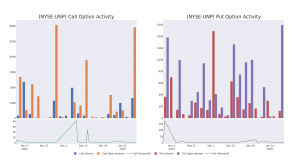
Market volatility is primed to intensify this week as traders await December’s Producer Price Index data on Tuesday. The Consumer Price Index report will follow on Wednesday.
With Wall Street’s expectations for interest rate cuts hanging by a thread, stronger-than-expected inflation data could amplify concerns about the Federal Reserve’s monetary policy trajectory.
Why December’s Inflation Data Is Critical
The PPI measures input price changes faced by producers. It is closely watched as a precursor to consumer price inflation and a barometer of corporate profitability. Rising input prices often signal higher future consumer prices, though companies unable to pass on these costs to consumers may face margin pressures—a key concern as fourth-quarter earnings season kicks off.
See Also: Oil Could Hit $90, Goldman Sachs Says: ‘Trump May Not Ease Sanctions’ On Russia
In November 2024, PPI rose 3% year-over-year, the highest since February 2023, up from October’s 2.6% and beating economist forecasts. Core PPI, which excludes food and energy, climbed 3.4% annually, also above expectations.
The result rattled markets:
- The S&P 500 — as tracked by the SPDR S&P 500 ETF Trust SPY — falling 0.6%
- The Nasdaq 100, tracked by the Invesco QQQ Trust, Series 1 QQQ, slipped 0.7% on the release date.
High impact on volatility, as expectations for interest rates are now extremely sensitive on upcoming inflation data. This is so because the December labor market report confirmed a robust and strong job market, pushing many Wall Street analysts to revise their outlook for interest rate cuts.
Economists expect December’s report to show continued inflationary pressures. PPI is forecast to rise from 3% to 3.4% year-over-year. Core PPI is projected to accelerate from 3.4% to 3.7%. On a month-over-month basis, overall PPI is expected to slightly decelerate from 0.4% to 0.3%. Core PPI is seen ticking higher from 0.2% to 0.3%.
“December’s CPI and PPI are likely to show core consumer services inflation remains stuck well above 2.0%,” said veteran Wall Street analyst Ed Yardeni on Monday.
On Friday, Bank of America’s economist Aditya Bhave highlighted the risk of persistent inflation and resilient labor market as factors forcing the Fed to hold rates higher for longer, potentially shifting focus from cuts to hikes.
Read also: Wall Street Slashes Interest Rate Cut Bets After Jobs Data: Are Hikes Back On The Table?
Rising Yields And Weak Stocks Reflect Fed Uncertainty
The December labor market report, which showed continued strength with a robust jobs market, has already led several Wall Street analysts to revise their interest rate expectations.
Markets are now pricing in a longer period of higher rates, with Fed cuts pushed further out into the future.
These shifting expectations have weighed heavily on stocks and bonds.
The S&P 500 has fallen over 5% in the past month, including a 3% drop last week. Tech stocks have been hit harder, with the Nasdaq 100 down 7% from mid-December highs.
Bond markets tell a similar story. Treasury yields have surged, dragging bond prices lower. The iShares 20+ Year Treasury Bond ETF TLT has fallen more than 10% since early December, entering correction territory.
December’s inflation reports will be a key test for Wall Street’s fragile expectations of interest rates.
As inflation remains stubbornly high, the Fed’s path forward is becoming increasingly uncertain, keeping investors on alert for any macro-related update.
Read now:
Image: Shutterstock
Market News and Data brought to you by Benzinga APIs
© 2025 Benzinga.com. Benzinga does not provide investment advice. All rights reserved.


